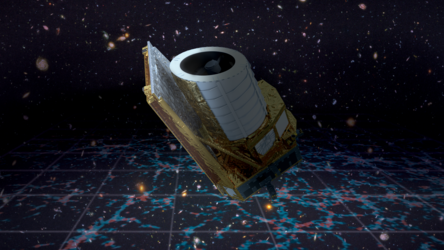Accept all cookies Accept only essential cookies See our Cookie Notice

About ESA
The European Space Agency (ESA) is Europe’s gateway to space. Its mission is to shape the development of Europe’s space capability and ensure that investment in space continues to deliver benefits to the citizens of Europe and the world.
Highlights
ESA - United space in Europe
This is ESA ESA facts Member States & Cooperating States Funding Director General Top management For Member State Delegations European vision European Space Policy ESA & EU Responsibility & Sustainability Annual Report Calendar of meetings Corporate newsEstablishments & sites
ESA Headquarters ESA ESTEC ESA ESOC ESA ESRIN ESA EAC ESA ESAC Europe's Spaceport ESA ESEC ESA ECSAT Brussels Office Washington OfficeWorking with ESA
Business with ESA ESA Commercialisation Gateway Law at ESA Careers Cyber resilience at ESA IT at ESA Newsroom Partnerships Merchandising Licence Education Open Space Innovation Platform Integrity and Reporting Administrative Tribunal Health and SafetyMore about ESA
History ESA Historical Archives Exhibitions Publications Art & Culture ESA Merchandise Kids Diversity ESA Brand Centre ESA ChampionsLatest
Space in Member States
Find out more about space activities in our 23 Member States, and understand how ESA works together with their national agencies, institutions and organisations.
Science & Exploration
Exploring our Solar System and unlocking the secrets of the Universe
Go to topicAstronauts
Missions
Juice Euclid Webb Solar Orbiter BepiColombo Gaia ExoMars Cheops Exoplanet missions More missionsActivities
International Space Station Orion service module Gateway Concordia Caves & Pangaea BenefitsLatest
Space Safety
Protecting life and infrastructure on Earth and in orbit
Go to topicAsteroids
Asteroids and Planetary Defence Asteroid danger explained Flyeye telescope: asteroid detection Hera mission: asteroid deflection Near-Earth Object Coordination CentreSpace junk
About space debris Space debris by the numbers Space Environment Report In space refuelling, refurbishing and removingSafety from space
Clean Space ecodesign Zero Debris Technologies Space for Earth Supporting Sustainable DevelopmentLatest
Applications
Using space to benefit citizens and meet future challenges on Earth
Go to topicObserving the Earth
Observing the Earth Future EO Copernicus Meteorology Space for our climate Satellite missionsCommercialisation
ESA Commercialisation Gateway Open Space Innovation Platform Business Incubation ESA Space SolutionsLatest
Enabling & Support
Making space accessible and developing the technologies for the future
Go to topicBuilding missions
Space Engineering and Technology Test centre Laboratories Concurrent Design Facility Preparing for the future Shaping the Future Discovery and Preparation Advanced Concepts TeamSpace transportation
Space Transportation Ariane Vega Space Rider Future space transportation Boost! Europe's Spaceport Launches from Europe's Spaceport from 2012Latest

Over the Moon, one year later
Thank you for liking
You have already liked this page, you can only like it once!
The Orion capsule looks back at Earth and the Moon as it sets an epic record. The NASA spacecraft was some 430 000 km from our home planet and over 64 000 km from the Moon – the farthest any spacecraft built for humans has ever travelled.
The trio seems to be posing for a ‘family portrait’ on their way to making history, beating the record set by the Apollo 13 mission over half a century ago.
A year has passed since the Artemis I mission travelled to the Moon and back powered by the European Service Module. NASA’s mega Moon rocket roared into the night and onto the Moon on 16 November 2022. The Space Launch System lifted off from the Kennedy Space Center in Florida, USA, and put the uncrewed Orion spacecraft into Earth orbit.
During the 25-day mission, the European powerhouse fired its 33 engines to keep Orion on course and supplied electricity during the lunar trip. Much like a train engine pulls passenger carriages and supplies power, the European Service Module took the Orion capsule to its destination and back, including a flyby of the Moon.
This photo was taken halfway through the mission by a camera fastened to the end of a seven-metre long solar arrays. The four wings of the module were used as ‘selfie sticks’ to capture spectacular images. The ESA logo can be seen during the lunar orbit cruise.
The European Service Module separated from Orion in the last hours of its approach back to Earth. Without a heat shield to protect it from the friction of entering our planet’s atmosphere, the service module burned up harmlessly over the Pacific Ocean.
The Orion crew module returned to Earth 24 times faster than a speeding bullet for a safe splashdown. Using a skip entry technique, the capsule landed off the coast of Baja California, Mexico, on 11 December 2022. The first flight of the Artemis series was a success.
The module crafted by ESA and industry teams from more than 20 companies in ten countries across Europe excelled in its performance during the two-million-kilometre journey, saving 25% of the propellant and generating about 15% more power than expected. The module responded so well that NASA teams asked European engineers to perform additional tests to push the spacecraft to its limits.
Europe is powering humankind’s return to the Moon with the serial production of the European Service Module. The second powerhouse has recently been integrated with its crew module for the Artemis II mission. Together as one, both modules are completing several tests in preparation for a flight that will see three NASA astronauts and one CSA astronaut (Canadian Space Agency) orbiting the Moon.
Look back at the best moments of the European Service Module during the first anniversary of the Artemis I mission on ESA’s Orion blog.
-
CREDIT
NASA -
LICENCE
ESA Standard Licence

Artemis rocket with Orion and European Service Module inside

Orion and European Service Module in Artemis rocket

Orion integration on top of Moon launcher

Orion integration on top of Moon launcher















 Germany
Germany
 Austria
Austria
 Belgium
Belgium
 Denmark
Denmark
 Spain
Spain
 Estonia
Estonia
 Finland
Finland
 France
France
 Greece
Greece
 Hungary
Hungary
 Ireland
Ireland
 Italy
Italy
 Luxembourg
Luxembourg
 Norway
Norway
 The Netherlands
The Netherlands
 Poland
Poland
 Portugal
Portugal
 Czechia
Czechia
 Romania
Romania
 United Kingdom
United Kingdom
 Slovenia
Slovenia
 Sweden
Sweden
 Switzerland
Switzerland
























